Chiropractic Treatment in Japan
Search and Compare the Best Clinics and Doctors at the Lowest Prices for Chiropractic Treatment in Japan

Find the best clinics for Chiropractic Treatment in Japan
No clinics available
Indonesia offers the best prices Worldwide
Price: $ 3

- Home
- Japan
Compare Before & After Photos of _procedure_photos.phpChiropractic Treatment
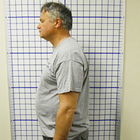
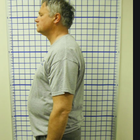
Full-side view
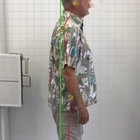
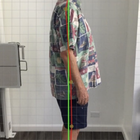
Full-side view
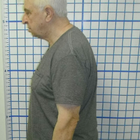

Full-side view

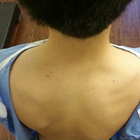
Full-side view
WHY US?
At Medijump, we're making medical easy. You can search, compare, discuss, and book your medical all in one place. We open the door to the best medical providers worldwide, saving you time and energy along the way, and it's all for FREE, no hidden fees, and no price markups guaranteed. So what are you waiting for?

Free

Best Price

Widest Selection

Risk-Free
What you need to know about Chiropractic Treatment in Japan

Chiropractic treatment is a type of procedure where a trained and licensed practitioner (chiropractor) uses their hands to help relieve problems with the joints, muscles, and bones. It is considered a type of complementary and alternative medicine (CAM), meaning it is not a conventional medical treatment. Sometimes, the procedure is used in conjunction with conventional medical treatment.
Chiropractic treatment is mainly used to help relieve painful muscles and joints, such as back pain, shoulder pain, neck pain, elbow pain, and pain from osteoarthritis. The goal of the treatment is to reduce nerve irritability, improve functionality, and restore or increase range of motion in the affected area. Detailed information about the specific chiropractic protocols in will be provided by the clinic.
What is the cost of Chiropractic Treatment?
One of the key factors that influence your decision to undertake Chiropractic Treatment in will likely be the cost. Prices can change depending on your condition, the number of sessions, and the chiropractor's charges. Session costs can be from 30 to hundreds of dollars (intouchchiropractic). Some insurances can cover chiropractic costs, so check your insurance before booking a clinic visit.
What does a Chiropractic Treatment Procedure Involve?
At the initial appointment, your symptoms will be assessed using lab tests or diagnostic imaging to determine if chiropractic treatment is suitable and what techniques are likely to help your specific condition.
During the procedure, you will be asked to lie down in a specific position on a chiropractic table. Then, the chiropractor may use different techniques to treat problems with joints and muscles, including:
-
Spinal manipulation or chiropractic adjustment (the chiropractor uses their hands to apply controlled, sudden force to the bones, muscles, and joints in and around the spine). Gradually moving your joints into different positions.
-
Short, sharp thrusting movements in the affected area.
-
Stretching or pulling your muscles in different directions.
Although some people experience small discomfort, chiropractic treatment is usually not painful.
How Long Should I Stay in Japan for a Chiropractic Treatment Procedure?
You can leave the clinic or hospital straight away after the treatment session. You should also be able to travel on the same day. However, it is recommended that you stay in Japan for at least a day before traveling to give your body a little time to fully recover. Since chiropractic treatment may require more than one session, you may need to attend six to 12 sessions. You have the choice to make multiple travels to Japan or stay for the whole treatment (around 6 weeks).
What's the Recovery Time for Chiropractic Treatment Procedures?
The recuperation period following a Chiropractic Treatment can greatly differ based on your unique health status and the treatment regimen suggested by your chiropractor. Some patients might notice immediate improvement post a single session, while others might require several sessions spanning weeks to discern notable enhancements. Post-procedure, you might experience a slight discomfort, rigidness, or fatigue.
What sort of Aftercare is Required for Chiropractic Treatment Procedures?
Chiropractic Treatment is an ongoing process; maintaining benefits and preventing symptom recurrence requires adhering to lifestyle, exercise, and dietary recommendations from your chiropractor. Follow-up visits are crucial for tracking progress, making adjustments, and providing continuous pain relief. Depending on your health, regular exercises or physiotherapy may also be recommended.
What's the Success Rate of Chiropractic Treatment Procedures?
Chiropractic Treatment has proven highly effective for conditions such as lower back pain, neck pain, and headaches. The treatment may also improve other conditions, such as osteoarthritis and fibromyalgia. Research suggests that spinal adjustments, in conjunction with lifestyle changes, can significantly improve overall wellness.
Most patients report high satisfaction after chiropractic treatments, with many experiencing notable pain relief. Nevertheless, the success of Chiropractic Treatment can hinge on factors like the specific health issue treated, the competence of the chiropractor, and the patient's adherence to post-treatment care recommendations.
Are there Alternatives to Chiropractic Treatment Procedures in Japan?
The alternative to chiropractic treatment depends on your specific condition, so it is best to talk to your doctor before undergoing anything. Alternative treatments that can provide comparable pain relief and improve physical functionality include physical therapy, acupuncture, massage therapy, and regular exercise.
What Should You Expect Before and After the Procedure
Before the Chiropractic Treatment, your chiropractor carries out an exhaustive assessment encompassing a physical check-up and if necessary, diagnostic imaging tests. Thereafter, your healthcare history and present health conditions are reviewed to formulate a bespoke treatment strategy.
After the procedure, transient discomfort in treated regions is typical but should subside within 24 hours. Most patients depart the clinic feeling improved; the pain should be relieved, nerve irritability should be reduced, the functionality should be improved, and the range of motion in the affected area should be restored. In succeeding appointments, your chiropractor will monitor progress and adjust the treatment scheme as required.
What are the Potential Risks of Chiropractic Treatment?
While Chiropractic Treatment is safe when performed by a trained chiropractor, like any medical treatment, it does carry some potential risks. It's important to note that the majority of patients experience no serious adverse effects and find their treatment comfortable.
There are, various minor side effects and some rare but serious risks to chiropractic treatment, including:
-
Pains and aches
-
Tiredness
-
Stiffness
-
Stroke
-
Herniated or slipped disk
-
Spinal cord injury.
Whilst the information presented here has been accurately sourced and verified by a medical professional for its accuracy, it is still advised to consult with your doctor before pursuing a medical treatment at one of the listed medical providers
No Time?
Tell us what you're looking for and we'll reachout to the top clinics all at once
Enquire Now

Popular Procedures in Japan
Prices Start From $400

Prices Start From $21

Recommended Medical Centers in Japan for procedures similar to Chiropractic Treatment

- Interpreter services
- Translation service
- Religious facilities
- Medical records transfer
- Medical travel insurance
- Health insurance coordination
- TV in the room
- Safe in the room
- Phone in the room
- Private rooms for patients available

- Interpreter services
- Translation service
- Religious facilities
- Medical records transfer
- Medical travel insurance
- Health insurance coordination
- TV in the room
- Safe in the room
- Phone in the room
- Private rooms for patients available

- Interpreter services
- Translation service
- Religious facilities
- Medical records transfer
- Medical travel insurance
- Health insurance coordination
- TV in the room
- Safe in the room
- Phone in the room
- Private rooms for patients available

- Interpreter services
- Translation service
- Religious facilities
- Medical records transfer
- Medical travel insurance
- Health insurance coordination
- TV in the room
- Safe in the room
- Phone in the room
- Private rooms for patients available

- Interpreter services
- Translation service
- Religious facilities
- Medical records transfer
- Medical travel insurance
- Health insurance coordination
- TV in the room
- Safe in the room
- Phone in the room
- Private rooms for patients available

- Interpreter services
- Translation service
- Religious facilities
- Medical records transfer
- Medical travel insurance
- Health insurance coordination
- TV in the room
- Safe in the room
- Phone in the room
- Private rooms for patients available

- Interpreter services
- Translation service
- Religious facilities
- Medical records transfer
- Medical travel insurance
- Health insurance coordination
- TV in the room
- Safe in the room
- Phone in the room
- Private rooms for patients available

- Interpreter services
- Translation service
- Religious facilities
- Medical records transfer
- Medical travel insurance
- Health insurance coordination
- TV in the room
- Safe in the room
- Phone in the room
- Private rooms for patients available

- Interpreter services
- Translation service
- Religious facilities
- Medical records transfer
- Medical travel insurance
- Health insurance coordination
- TV in the room
- Safe in the room
- Phone in the room
- Private rooms for patients available
Chiropractic Treatment in and around Japan
About Japan
Japan is special in its own way; the culture, food, people, as well as technology are envied by the world over. With old Japan, comes the ancient tradition in the form of a geisha performance, onsen (hot spring) visit in the mountains, tea ceremony, or shrine visit. In contrast, there is modern Japan, full of smart systems and electronics, colorful advertisements and displays, and ultra-modern architecture. In recent years, Japan has become one of the top destinations in the world for oncology treatments and sees many tens of thousands of medical tourists each year. Many of these travel from within the region, including China and Korea, but they are unable to compete with the SE Asian nations with prices. Private hospitals are located across the country, with a particular focus in major cities like Tokyo, Kyoto, and Osaka. 25 of these facilities are JCI-accredited, with many offering Chiropractic Treatment procedures.
Popular Parts of Japan
Located in the Pacific Ocean, Japan is a stratovolcano archipelago. The four largest islands are Honshu, Hokkaido, Kyushu, and Shikoku. With a population of 127 million, 98% are ethnic Japanese. The country perfectly balances traditional with modern technology. Tourists will first see its exceptionally modern face, but after traveling around, they will find many opportunities to connect with the beautiful traditional culture.
- Tokyo is Japan’s capital, one of the 47 prefectures of Japan. It’s a huge metropolis that offers traditional arts and culture, futuristic infrastructures, and good restaurants. The cherry blossoms that bloom in Spring is one of the most popular sights. The soft pink petals are an icon of the country. There is an unlimited choice of shopping, many museums that cover every era of Japanese art history, and even a robot restaurant.
- Kyoto is made of religious architecture, with around 2000 temples and shrines. It moves at a slower pace than any other city in Japan. Filled with samurais, geishas, Zen gardens, and the torii gate, Kyoto is the spiritual center of Japan. The city is also known for its food, head to the Nishiki Market, a four-hundred-year-old local food market that offers a range of national cuisine to modern food from all over the world.
- Osaka, the second largest metropolitan area after Tokyo is known to be the most delicious city. The city is nicknamed “the nation’s kitchen.” Visit Dotonburi to experience the food culture of Osaka. Besides the food, there are numerous attractions that tourists should visit such as Universal Studios Japan, Cup Noodles Museum, Aquarium Kaiyukan, Osaka Castle, and Umeda Sky Building.
- Fukuoka has a welcoming feel with sunny weather and so much to do. It’s made up of two towns, the port city of Hakata and the former castle town of Fukuoka. Visit the impressive Fukuoka Castle, explore the Sumiyoshi-Jinja Shrine, learn history in Kyūshū National Museum, experience the ancient art of calligraphy and origami in Hakata Machiya Folk Museum, and enjoy a calming bath in one of the Onsen hot springs.
- Nagoya is the industrial center of Japan. It’s the birthplace of Toyota and a popular pinball-style game Pachinko. Although many of the historic buildings were destroyed in the air raids of 1945, tourists can still indulge in its culture and tradition. Visit the Nagoya Castle that was reconstructed in 1959, walk around the Atsuta Shrine, or see the history of the automobile in the Toyota Automobile Museum.
Weather and Climate in Japan
Japan has four distinct seasons.
- Summer starts in June and lasts until August. The temperature can get very hot, up to 40 °C in some places, with high humidity. June is the rainy season where the farmers plant their rice. The rainy season is over in August but the typhoon season starts to peak.
- Autumn starts in September and ends in November. September has the greatest risk of typhoons. The weather is generally mild. October is pleasantly warm with less humidity than in summer, making it a food time for traveling the country.
- The temperature will drop in Winter. It lasts from December to February and is usually dry, pleasant, and sunny. The average temperature is around 2°C to 12°C, it rarely drops below 0°C. The northern island of Hokkaido, the Japan Alps, and the Japan Sea coast get a lot of snow while Tokyo gets very little snow.
- Spring is said to be the best time to visit Japan because of its mild weather and cherry blossoms. The season starts in March and ends in May. The temperature will gradually increase during spring with little rainfall and clear sky.
Getting Around in Japan
The main airport for international tourists is the Narita International Airport. It is located around 60km east of central Tokyo. It serves both domestic and international flights to almost every major city around the globe. There are several budget airlines that operate flights from this airport, namely Jetstar Japan, Eastar Jet, and Peach. There are other international airports such as Kansai International Airport, New Chitose International Airport, and Kyushu Saga International Airport.
To get to Tokyo from Narita Airport, tourists can use the rail, bus, taxi, or car rental. The most affordable train line is the Keisei Line that connects with the Toei Asakusa Subway Line and the Yamanote Line, it costs around ¥1,190 to ¥1,230 ($10 to $11.3). There’s also the Sky Access Express train that offers better access to Tokyo, a trip to Asakusa will cost around ¥1,290 ($11.9) and take about 58 minutes. The quickest way to get to Tokyo will be by the Skyliner train, it takes just 36 minutes to Nippori and will cost around ¥2,470 ($22.7). The airport introduced N’EX Tokyo Round-Trip ticket for foreign passport holders that provides round-trip travel from Narita to Tokyo and back for ¥4,000 ($37) for adults and ¥2,000 ($18.4) for children.
A regular taxi from Narita to Tokyo is very expensive, usually over ¥20,000 ($184). The best option is the shared minibus that starts with ¥6,180 ($57) per person. Buses are usually more affordable, the Limousine Bus costs ¥2,880 ($26.5) and the Tokyo Shuttle costs around ¥900 ($8) to ¥1,000 ($9).
Getting around Japan is fairly easy because the country has excellent public transportation. It is recommended to get a Japan Rail Pass. Japan’s bullet train is fast but expensive. There are cheaper train options. Buses are less expensive but will take more time than trains.
Tourist Visas in Japan
Citizens of 68 countries and territories can enter and stay in Japan for up to 90 days without a visa. Citizens of Indonesia, Brunei, and Thailand are granted a 15-day visa-free trip to Japan. Citizens of the United Arab Emirates are allowed to stay for 30 days without a visa. It is advisable to contact the nearest Consular Section of the Embassy or Consulate General of Japan for more information.
Additional Information
- Local Currency: Yen (¥) is the local currency. $1 will get you ¥11 ¥1,000 is worth approximately $9.
- Money & Payments: ATMs are usually located in post offices and convenient stores. There are only a few branches of major Japanese banks that accept foreign-issued cards. Credit cards are accepted in major cities, but the rural area doesn’t. It’s best to always bring cash and bring a coin purse because everything below ¥500 is coins. Tipping is not mandatory, high-end hotels and restaurants usually add a 10% service fee to the bill.
- Local Language: The official language is Japanese. English is common in major cities with many tourists such as Tokyo, Osaka, and Tokyo. Some restaurants write their menu in English and Japanese.
- Local Culture and Religion: The dominant religion in Japan is Shinto and Buddhism. There’s a small group of Christians as well.
- Public Holidays: Japan has sixteen national holidays each year, including Children’s Day, Constitution Memorial Day, and Marine Day. The country hosts numerous annual festivals such as Gion Matsuri in Kyoto, Awa Odori in Tokushima, and Yuki Matsuri Snow Festival in Sapporo.
Popular Searches
- Plastic Surgery in Thailand
- Dental Implants in Thailand
- Hair Transplant in Thailand
- Breast Augmentation Thailand
- Gastric Sleeve in Thailand
- Gender Reassignment Surgery in Thailand
- Laser Hair Removal in Bangkok
- Botox in Bangkok
- Dermatology in Bangkok
- Breast Augmentation in Bangkok
- Coolsculpting in Bangkok
- Veneers in Turkey
- Hair Transplant in Turkey
- Rhinoplasty in Turkey
- Stem Cell Therapy in Mexico
- Rhinoplasty in Mexico
- Liposuction in Mexico
- Coolsculpting in Tijuana
- Rhinoplasty in Korea
- Scar Removal in Korea
- Gastric Sleeve in Turkey
- Bone Marrow Transplant in India
- Invisalign in Malaysia
- Plastic Surgery in the Dominican Republic
- Tummy Tuck in the Dominican Republic
- Plastic and Cosmetic Surgery in Poland
- Rhinoplasty in Poland
- Hair Implant in Poland
- Dental Implants in Poland
- IVF in Turkey